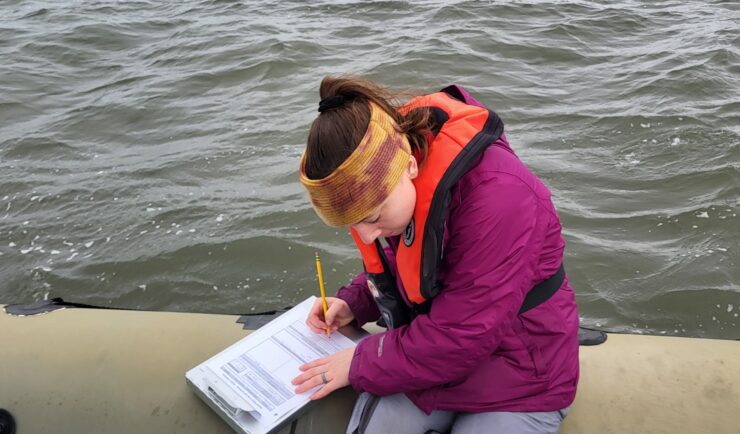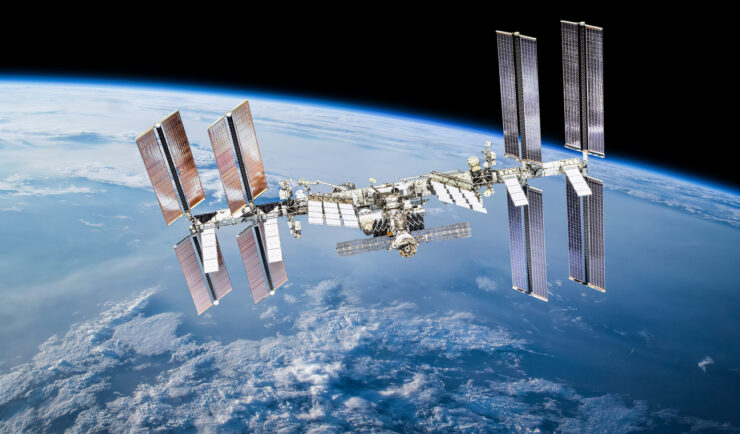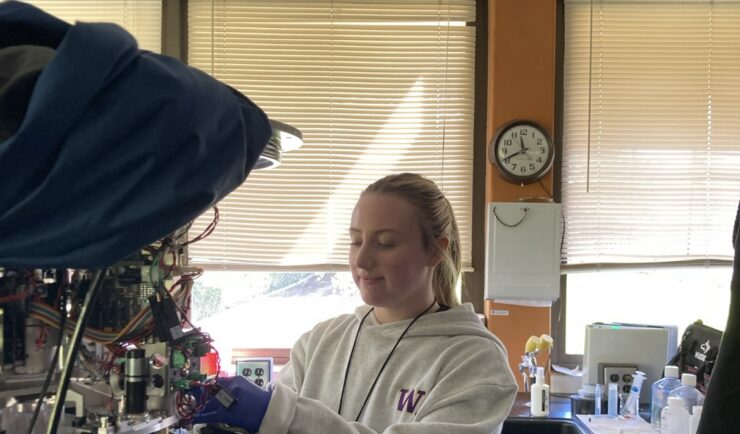Seagrasses are critical to coastal and ocean ecosystems, protecting coastlines from erosion, stabilizing ocean sediment, and improving water clarity. They provide food and shelter for aquatic life, including seahorses, turtles, thousands of species of fish, and more. In addition, they are amazing carbon sequesters, meaning they absorb atmospheric carbon reducing greenhouse gases. On World Seagrass Day, we celebrate this invaluable submerged aquatic vegetation and share our contribution to protecting seagrass meadows through various federal government contracts. Explore several examples of how our employee owners have contributed.

Mapping Habitat
- Employee owners have mapped seagrass habitat in Oregon estuaries using two different approaches: remote sensing and field surveys. CSS provided technical support to the U.S. Environmental Protection Agency (EPA) Seagrass Habitat Mapping Project, which was designed to test the utility of remote sensing technology to map subtidal seagrass habitats in turbid estuarine waters. In support of this project, CSS operated side scan sonar, underwater video, charting GPS-fathometer (used to measure the depth of the estuary), and computer equipment to collect and analyze spatially-explicit imagery of targeted seagrass beds in Oregon estuaries.
- In Alaska, CSS is supporting the National Oceanic and Atmospheric Administration’s (NOAA) National Centers for Coastal Ocean Science (NCCOS) on a new project using unoccupied aerial vehicles, remotely operated underwater vehicles, and SCUBA surveys to map seagrass and kelp habitats and how they change over time. The data from this project will help inform decision makers at the federal, state, and tribal levels.
Surveying Change
- In 2011 and 2012, CSS provided field support to the U.S. EPA to re-survey 274 of the Intertidal Benthic Habitat plots in Oregon estuaries originally surveyed in 1997. These plots were originally surveyed for 11 distinct habitat cover classes including common eelgrass and the non-indigenous dwarf eelgrass, both of which are types of seagrasses. The team assessed percent-coverage to measure the change in cover of the non-indigenous dwarf eelgrass at intertidal stations in lower and middle Yaquina estuary over the 14 to 15-year interval between the summer 1997 and summers of 2011 and 2012.
- As part of the CSS contract with NOAA’s NCCOS, employee owners supported a New Jersey barrier island restoration project in which dredge sediment was used to replenish an eroded island. Following the restoration the team monitored changes to adjacent seagrass cover over time to understand how habitats responded to the restoration.
Assessing Growth
- CSS participated in the U.S. EPA Seagrass Root Demography Study in Newport, Oregon to determine the seasonality of seagrass root growth and turnover. CSS staff used minirhizotron (a camera system designed to study roots) video technology to obtain images of seagrass roots located in intertidal and subtidal zones in the Yaquina estuary. Over a four-year period, the team collected root images monthly, and digitized over 5,000 total root images.
- In support of a seagrass gas exchange study at the U.S. EPA Newport lab, CSS measured seagrass photosynthesis and respiration monthly over a three-year period. This effort included approximately 300 total measurements of leaf photosynthesis and dark respiration, and approximately 100 total measurements of root/rhizome respiration measurements. In addition, the team developed photosynthesis versus irradiance and respiration versus temperature response curves for seagrass.
- CSS recently supported an U.S. EPA study of seagrass dynamics in Puerto Rico, specifically the potential role of anthropogenic nutrients in favoring the establishment and expansion of an invasive seagrass to the detriment of the native seagrass community.
Supporting management
- CSS staff supporting NOAA’s Office for Coastal Management and their partnership with the Bureau of Ocean Energy Management are responsible for managing and maintaining seagrass data and data services for MarineCadastre.gov. This is part of a larger collection of ocean data that provides ocean managers with the resources they need for ocean planning and renewable energy siting.
- The National Estuarine Research Reserve System, a network of 30 sites around the U.S., protects thousands of acres of seagrass meadow. Washington’s Padilla Bay Reserve, alone, protects a seagrass meadow covering nearly 8,000 acres! CSS employee owners serve as coastal management technical experts and liaisons between the national estuarine research reserves and NOAA’s Office for Coastal Management (the agency that manages the system in partnership with state agencies, academic institutions, or non-profit organizations).
See More CSS Insights

Organizing Teams to Monitor Coastal Contaminants
For nearly 40 years NOAA’s National Mussel Watch Program has been monitoring contaminants in coastal waters in over 400 sites around the U.S. by testing sediment and bivalves, such as oysters and mussels. A CSS employee owner organizes and coordinates the regional missions to collect and test samples. This includes developing a schedule and coordinating…

Ensuring Safety and Support for Sample Testing on the International Space Station
The International Space Station (ISS) gives scientists the opportunity to study the effects of space travel on human and plant tissues as well as understand how physical materials react during formation or exposure to a microgravity environment. CSS provides integrative expertise to NASA to support research and development and technology demonstrations conducted on the ISS,…

Monitoring Algal Blooms for Harmful Toxins
CSS employee owners support NOAA’s National Centers for Coastal Ocean Science (NCCOS) Harmful Algal Blooms (HAB) Sensor Development Team in their efforts to detect and monitor these harmful algal blooms in coastal waters where they are likely to occur. HAB monitoring is critical for detecting harmful toxins produced by some algae. When present in over…
